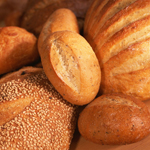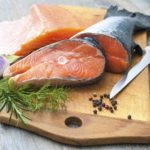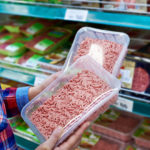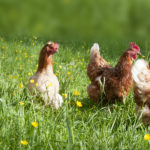Organic Salmon: Confusion in the Fish Market?
I’ve seen salmon labeled "organic," which is almost as expensive as wild salmon. Is it as good?
Andrew Weil, M.D. | October 24, 2006

The first thing you should know about "organic" salmon is that the designation isn’t official – it doesn’t come from the National Organic Program or include the U.S. Agriculture department’s "certified organic" seal. Some "organic" salmon on the market may come from Europe, where organic standards have been established (but may not measure up to the strict standards contemplated in the United States). Other "organic" salmon may be from farms that call themselves organic and may have higher standards regarding feed and other conditions than most salmon farming operations, but aren’t certified by the USDA.
The issue of organic certification for salmon and other fish is a regulatory nightmare. How do you translate organic standards that apply to raising animals on land to those in the water? To earn organic certification, animals on land must eat organically grown feed. For the past few years, the USDA has had experts trying to come up with workable suggestions for fish food for use in "organic aquaculture," but it doesn’t look as if there’s an easy answer for salmon (although there may be for other farmed fish). Under current rules, no fish, not even wild salmon or any other wild-caught fish, are considered organic.
I have long recommended eating salmon once or twice a week for the desirable omega-3 fatty acid it contains. Omega-3s can reduce the risk of heart disease and cancer, decrease inflammation, enhance mood and prolong life. These healthy fats are found at the lowest and most favorable omega-6 to omega-3 ratio in wild salmon, particularly in Alaskan sockeye salmon, a delicious fish that I eat often and highly recommend.
Farmed salmon contain some omega-3s but are lower in protein and higher in saturated fat than wild-caught salmon. Worse, some salmon raised in penned environments have been shown to contain residues of antibiotics and other drugs used to treat diseases that can occur in the unnaturally crowded conditions. They’re also often artificially colored pink, and some have been found to contain toxins including PCBs, dioxins, dieldrin and toxaphene – all fat-soluble compounds that tend to accumulate in the fat of ocean fish, including those used to make the fish meal for salmon farms. These widely publicized findings have been reported in a number of studies including one from the Pew Foundation in 2004 and another from the Environmental Working Group in 2003.
Contaminant levels are higher among farmed salmon because the fish meal (composed of ground fish) and fish oil they’re fed come from only a few species of ocean fish that accumulates the toxins in run-offs from agriculture and industry. The feed exposes farmed salmon to higher concentrations of contaminants than wild salmon, which have a more varied diet.
Bottom line: stick to wild Alaskan salmon and bypass "organic" salmon until you see that USDA certification logo. Tomorrow, I’ll tell you about the latest survey of wild salmon and what it means.
Andrew Weil, M.D.










